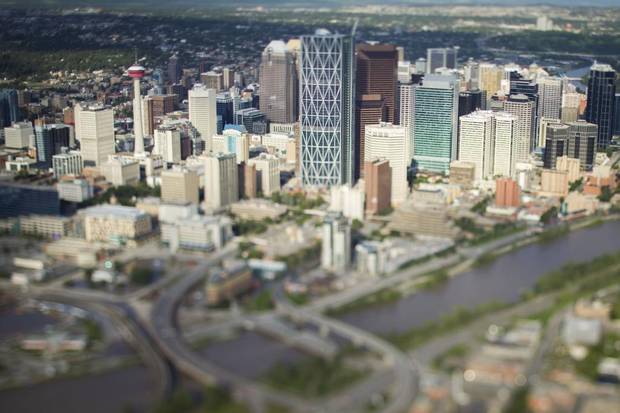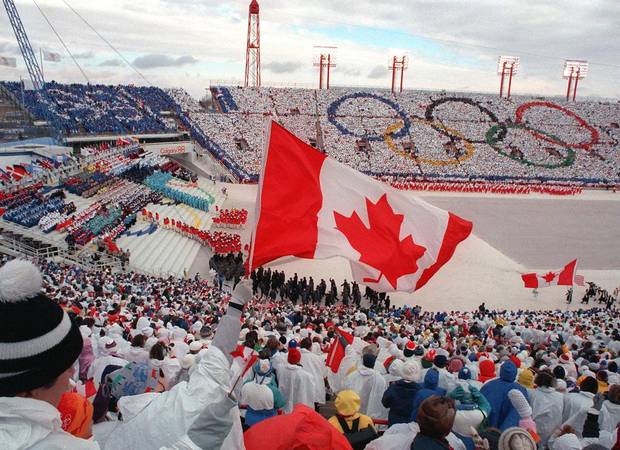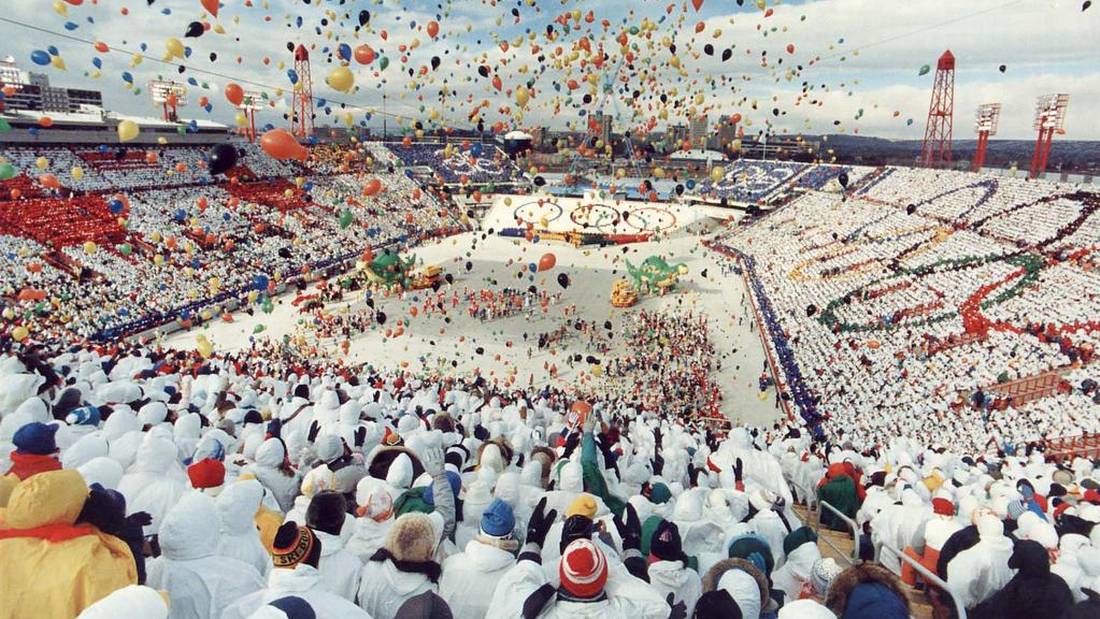Druh Farrell is a Calgary city councillor. She sports a small purple streak in her short white hair. She wears round blue glasses. She is the type of politician who pushes hard for public transit, walkable neighbourhoods, arts events. Ms. Farrell imagines Calgary's future as an urbane global city – the kind of place that would play host to the Olympics.
This week, she had questions for the folks examining whether Calgary should lobby for the 2026 Winter Olympics. The bid exploration committee predicts holding the Games would cost $4.6-billion and require $2.4-billion in public funding. Costs would exceed revenue by $425-million. Olympic boosters argue the Games would boost Calgary's reputation worldwide, juice its economy, and leave an infrastructure legacy ranging from social housing to new sports facilities. But the committee's cost estimate, in Olympic terms, is small. Host cities routinely blow their budgets.
"How have those other cities – all of them – got it so wrong and we're going to get it right?" Ms. Farrell, an Olympic skeptic, asked top officials with the bid committee at a recent council meeting Monday.
Read more: The remnants of 1988 won't make an Olympic bid much easier for Calgary
The query is code for a larger question: Are the Olympics the best way to build a city with global appeal? Detractors wonder why the city would take on the financial risk of the Olympics in favour of simply beavering away at projects that the city believes can make it an international destination.
Ms. Farrell worries that the Olympics could jeopardize the city's existing vision for both splashy and unsung projects.
The city's marquee development plan hangs on adding 46 kilometres to its light-rail system, a network that currently covers 52 kilometres. The expansion, known as the Green Line, is about more than train tracks. Calgary wedded the railway's map with development policies and calls it a "city-shaping" project. The Green Line is shorthand for the kind of city Calgary wants to become. It has been on the books for decades.
On Monday, city council will vote on whether Phase One is a go. The initial segment is expected to cost $4.65-billion, making it the largest capital project in Calgary's history. The city will cover $1.56-billion over 30 years and the federal and provincial governments will pay the balance. Ottawa has committed its share; Alberta is supportive but waiting for Calgary to make its final pitch.
The price tag covers just the physical elements of the project, but the outcome of the imagined elements will determine if Calgary gets to consider itself a global destination. The Green Line calls for neighbourhood hubs where people can live, shop and work. Affordable housing is a key component. The city intends to influence the location of homes, commercial buildings and amenities, such as libraries, through zoning changes.
The vision extends beyond how to cluster buildings and cul-de-sacs. Calgary owns the outfit that provides electricity in the city. The Green-Line plans call for a reduction in carbon emissions, a selling point for cities trying to better their image.
The first phase of the Green Line is 20 kilometres, stretching from a neighbourhood north of downtown to one in the far south. It includes a four-kilometre tunnel in the downtown core, making the initial 14-station expansion the most complex and expensive stage of the entire project. The first phase would provide easy access to the Calgary Stampede grounds and is scheduled to be done in 2026.
For Olympic supporters, the timing and route is attractive. Olympic cities need public transportation to major venues. The Olympic bid committee said its plans would not affect Calgary's transit aspirations. On one hand, this means the Olympic math will not skyrocket because of transit. But it also means a lost chance to use the Olympics as leverage to squeeze extra federal and provincial money to accelerate transit expansion or build a line to the airport.

Downtown Calgary.
John Lehmann/The Globe and Mail
Calgary must also budget for less sexy, but necessary, infrastructure such as water-security projects if it wants to be admirable. The city is working to protect itself from both floods and droughts. The federal and provincial governments cover some costs, but the city is still responsible for millions. Calgary, for example, is adding capacity to its major reservoir. It will cost $77-million and the city's portion is $70-million. Comparatively, small efforts like building berms and improving storm systems are under way. Roughly $200-million has been earmarked for these types of projects and $50-million of that must come from the city. And these are just two examples. Scores more are ongoing and being designed.
City council will soon decide the future of another key piece of infrastructure crucial to elevating its status while simultaneously making an Olympic bid competitive: a new arena. The Olympic committee is counting on the arena being built near the Stampede grounds rather than the original, flashier, proposal that the private partnership group that owns the Calgary Flames and other teams previously submitted. The partnership group, in hopes of defraying its costs, originally asked for $200-million in taxpayer cash and suggested a $240-million community revitalization levy. City officials, however, estimate the project would eventually drain $1.4-billion from Calgary's coffers.
Calgary is now widely expected to agree to a scaled-back arena near the Stampede grounds. The city's unknown potential financial obligations tied to the arena give Olympic detractors further reason to fret.
Examining the viability for a joint bid – Edmonton is the logical partner – is beyond the scope of the committee's mandate. But the group's findings may give Alberta's capital an opportunity to make a persuasive pitch to be included. The committee, for example, argues Calgary's small 67-year-old Stampede Corral, a demolition candidate, could hold less glamorous hockey matches. For curling, the committee proposed a new facility at the University of Calgary would have to be built.
But Edmonton has a new arena and a respectable old one that could play host to curling as well as a slice of the hockey tournament. Splitting the Olympics between rival cities may be politically advantageous to a provincial government allergic to picking favourites.
But Calgary giving up a share of hockey and perhaps conceding curling means weakening its economic case for the Olympics. That would dim the spotlight on Calgary and escalate security costs for the entire Games, according to Mary Moran, the president of Calgary Economic Development and an Olympic supporter.
"Calgary wouldn't benefit as much," she said, noting sharing the Games would detract from the arguments in favour of bidding. "It would weaken the economics of it."
The bid exploration committee will present its final report – and make a recommendation to council on whether to chase the Olympics – in July.
As for Druh Farrell's question about the accuracy of the Olympic math, Brian Hahn, the committee's general manager, said the bid exploration committee built $450-million in contingencies and worked with a consulting group that was involved in the past five Olympics.
"Those guys have done a very thorough job in terms of endeavouring to surface all things that reasonably could be surfaced," he said in an interview. "You can always poke at things, but this is a strong process. … These are reasonable numbers."
MORE FROM THE GLOBE AND MAIL:

